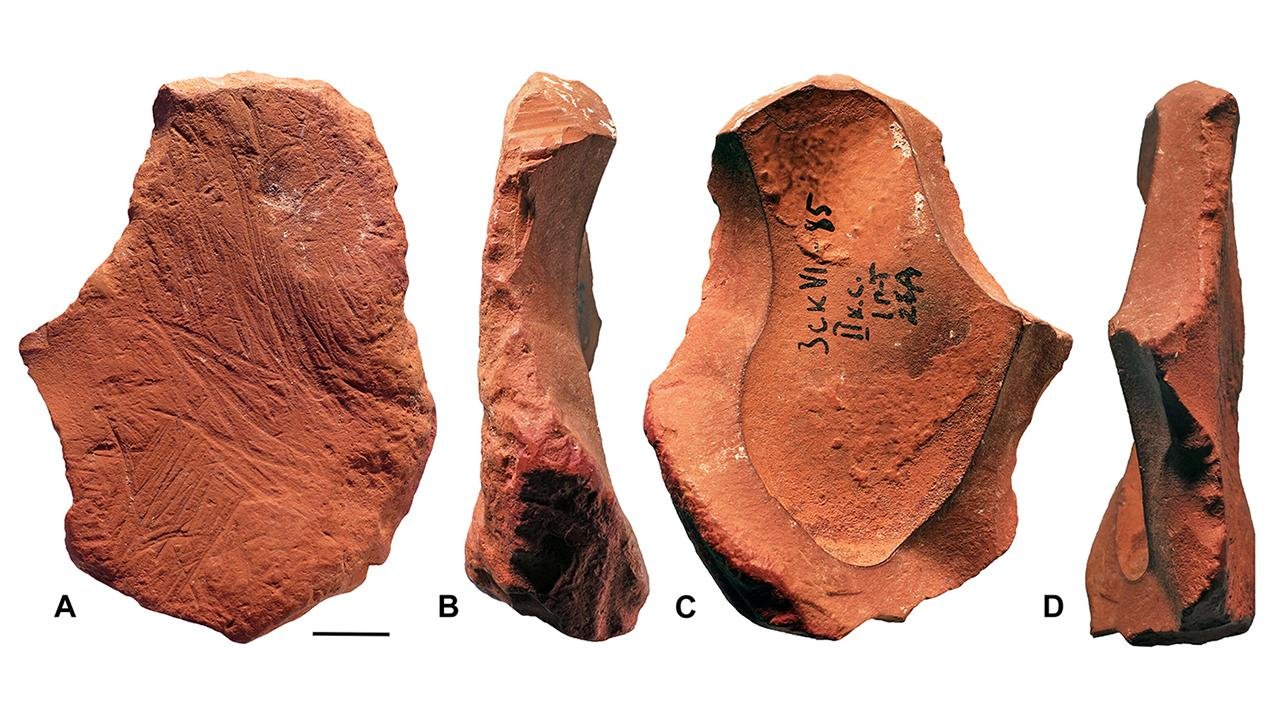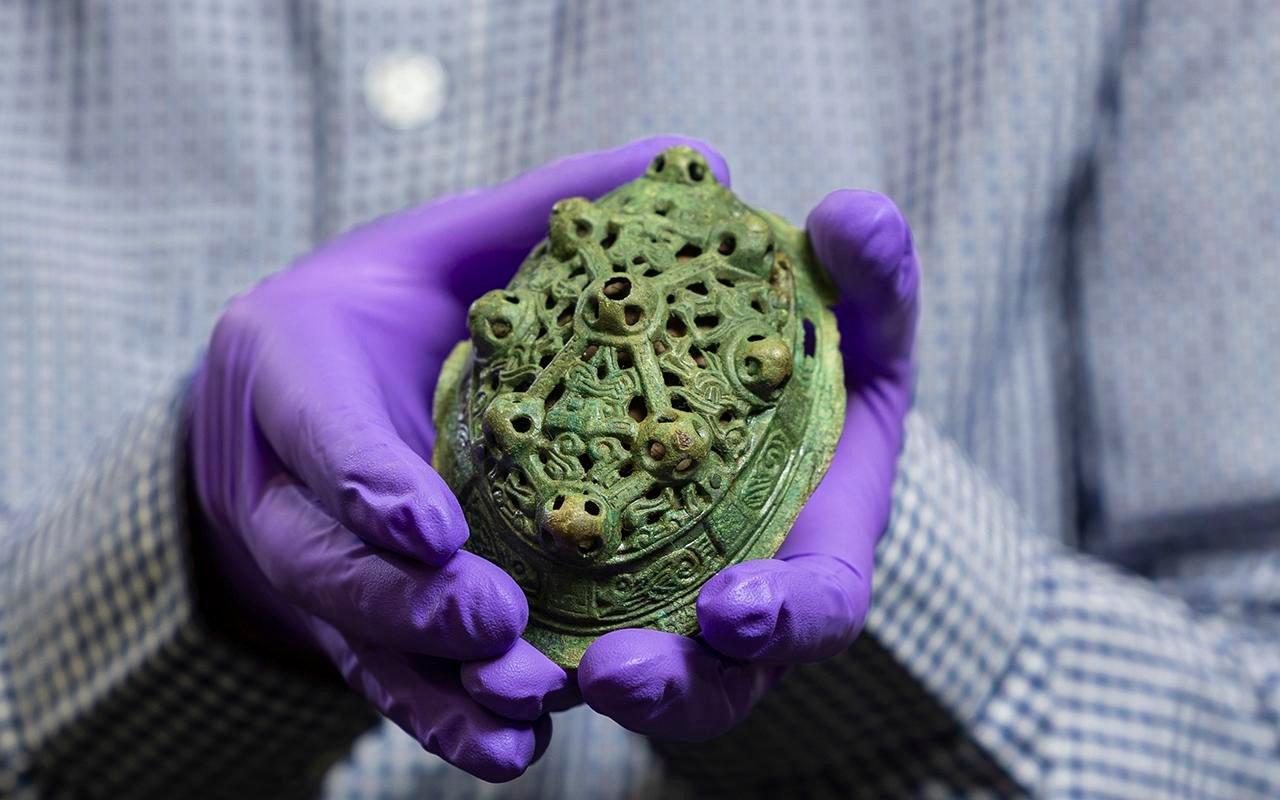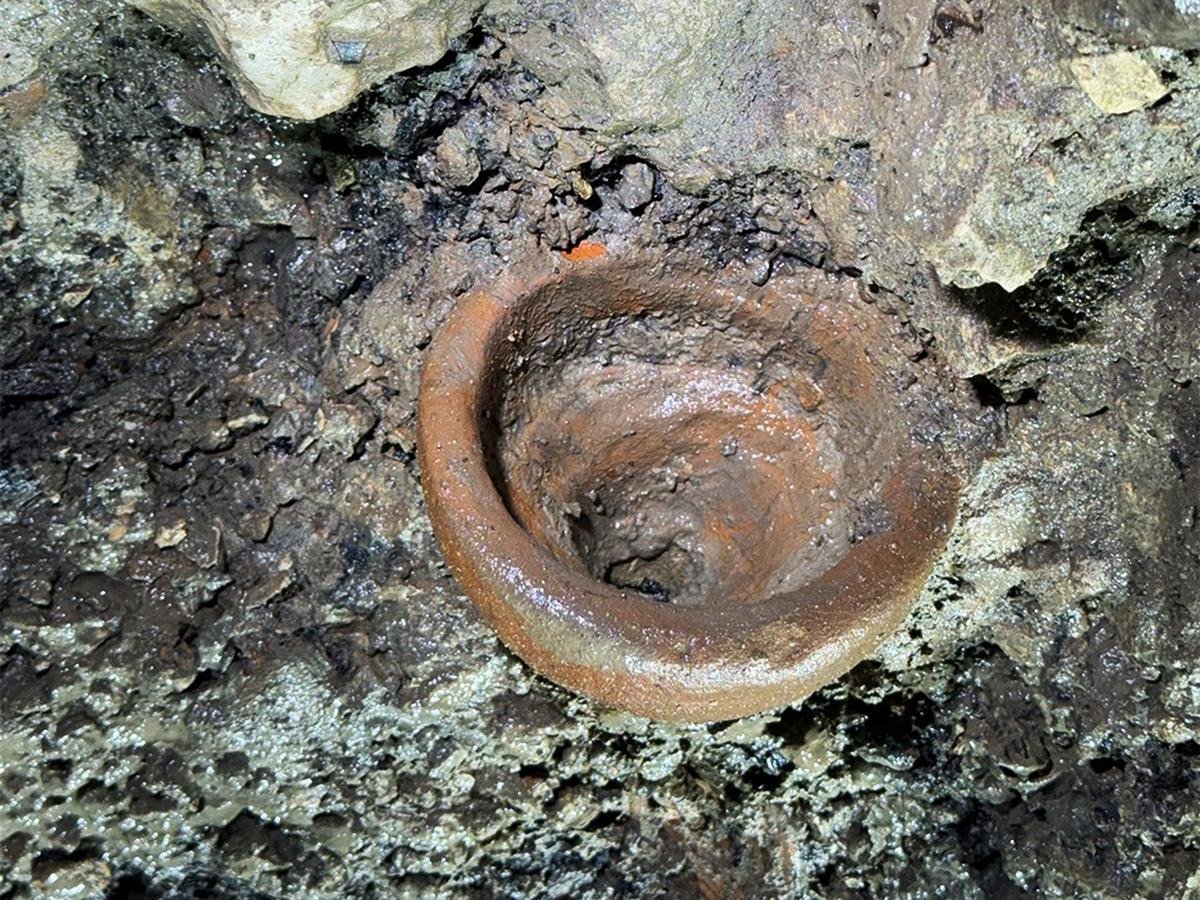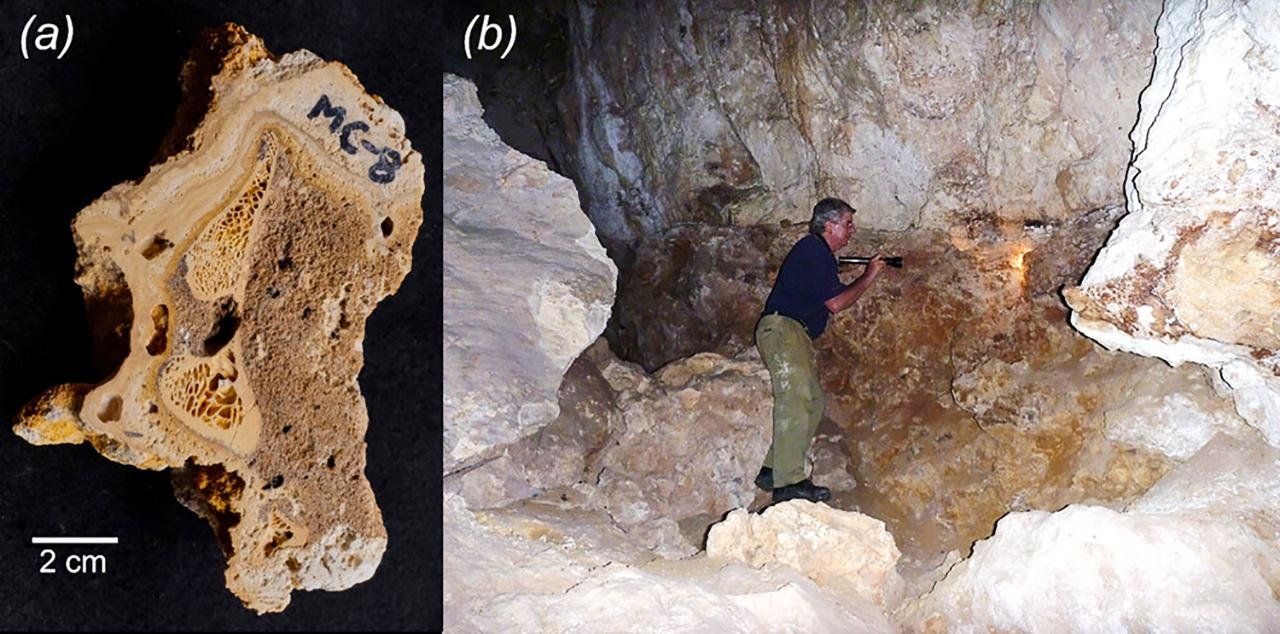A remarkable fragment of a Viking sword, described as a “first of its kind,” has been unearthed near the village of Witmarsum in the northern Netherlands. The artifact was identified as a pommel cap—a decorative endpiece from the hilt of a 10th-century gilded sword.
The discovery was made by metal detectorist Sander Visser in May while scanning farmland. He noticed a distinctive signal and uncovered the ornately designed piece buried just a few inches beneath the surface. Visser donated the find to the Fries Museum, where its historical importance quickly became evident.
The pommel cap features intricate designs in the Mammen style, an artistic tradition originating from the Danish town of Mammen and characterized by depictions of wild animals and curling patterns. The artifact is divided into five distinct sections, with the outer edges showcasing stylized wild boar heads. “The boars’ upward curling mouths are still clearly visible,” noted the Fries Museum in a Facebook post.
In Viking culture, wild boars symbolized strength, courage, and protection—qualities often ᴀssociated with warfare. The central section of the pommel cap exhibits a swirled knot pattern, further highlighting the craftsmanship and symbolic richness of the piece.
Dr. Nelleke IJssennagger-van der Pluijm, director of the Fryske Akademy, emphasized the importance of the find in a press statement, saying, “This extraordinary find shows that there is still a lot to discover about the Viking Age in Frisia. It enriches our understanding of Viking and Frisian interactions.”
Dr. Diana Spiekhout, curator of Middle Ages and Mound Culture at the Fries Museum, described the pommel cap as part of an “epic sword.” These weapons, renowned for their symbolic value and formidable reputation, were often pᴀssed down through elite networks across generations. Successive owners would sometimes modify the swords with additional ornate decorations, making them unique representations of their time and culture.
Evidence of this tradition has been found in Frisia but predominantly in earlier centuries. This particular discovery, dating to the 10th century, underscores the enduring significance of such swords and their connection to Viking and Frisian heritage.
The pommel cap’s presence in Friesland raises intriguing questions about its origins. How did it end up in Witmarsum? Who might have wielded such a prestigious weapon? These mysteries have sparked a collaborative research project between the Fryske Akademy and the Fries Museum.
“By combining our areas of expertise, we can study this find from various angles, namely from the Frisian context, the Viking world, and from sword traditions,” explained Dr. Spiekhout.
The artifact is slated to go on public display at the Fries Museum in 2025.
More information: Fryske Akademy / Fries Museum





